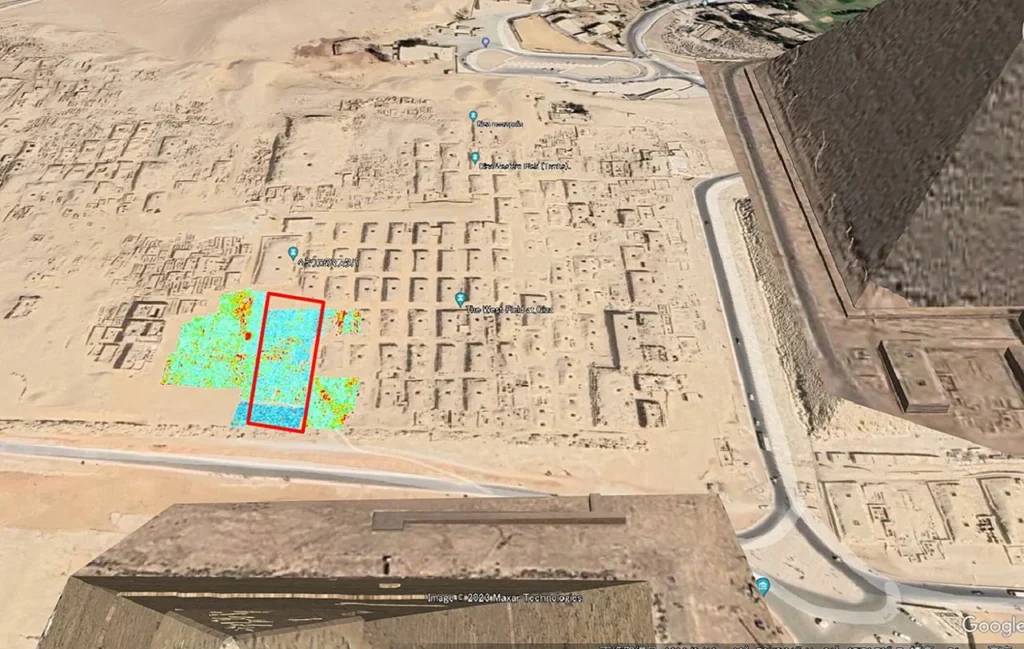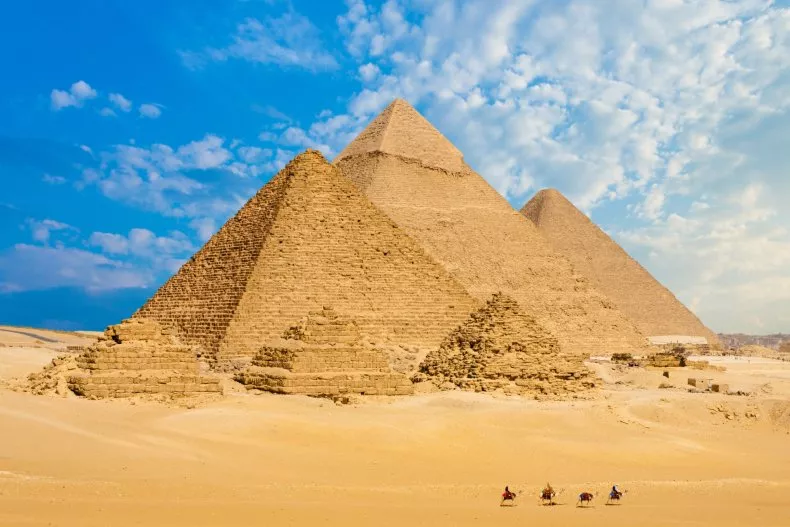By The Nexus Gazette.
9th July, 2024.
Archaeologists have unearthed a mysterious L-shaped structure buried beneath the sands of the Western Cemetery in Giza, Egypt, shedding new light on the ancient burial practices of the elite citizens and relatives of King Khufu. This discovery, made possible by cutting-edge technology, has added a fascinating twist to the ongoing exploration of Egypt’s archaeological wonders.
In an area where the surface appeared unremarkable, researchers employing ground-penetrating radar (GPR) and electrical resistivity tomography (ERT) uncovered the outlines of a previously unknown L-shaped structure just a few feet below ground level. The sharp angles and distinct shape strongly indicate human construction rather than natural formation. Further investigation revealed a larger structure connected to the initial find, prompting speculation that these features could be remnants of an ancient tomb or an associated ceremonial structure.

The breakthrough in uncovering these hidden structures came through the application of advanced archaeological techniques. Between 2021 and 2023, researchers utilized non-invasive methods such as GPR and ERT, which allowed them to map subsurface features with precision without disturbing the delicate archaeological layers. This approach has proven crucial in preserving the integrity of the site while unraveling its mysteries.

Despite the detailed imaging provided by the technology, the purpose and significance of the discovered chamber remain elusive. Archaeologists are eager to delve deeper into the investigation to determine whether the structures served as tombs, storage chambers, or had other ceremonial functions. The findings not only enrich our understanding of ancient Egyptian burial practices but also contribute to the ongoing exploration of the Giza plateau’s historical landscape.
Resources:
1.https://www.yahoo.com/news/archaeologists-found-secret-chamber-great-155943662.html
4.https://www.smithsonianmag.com/smart-news/hidden-chamber-pyramid-giza-180981745/